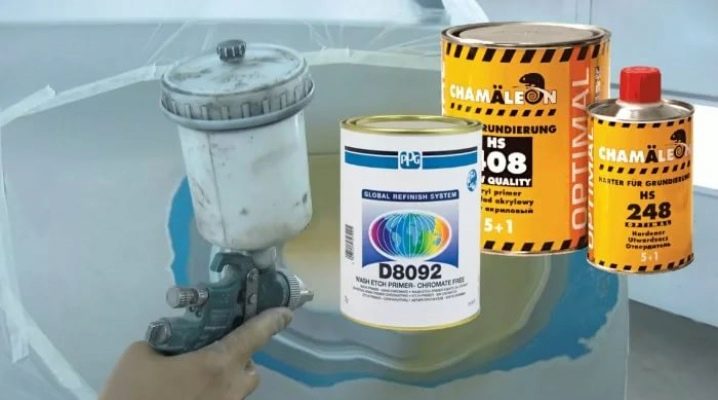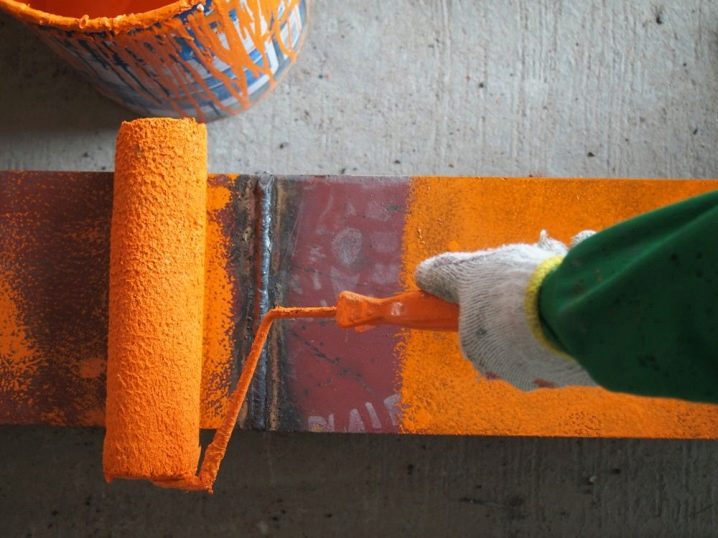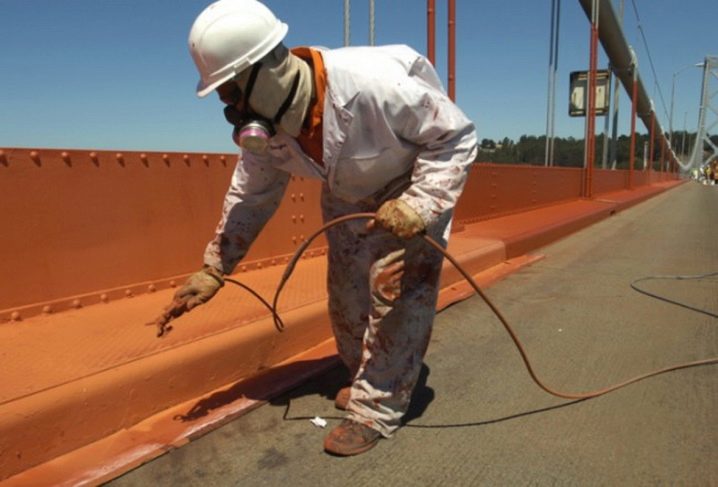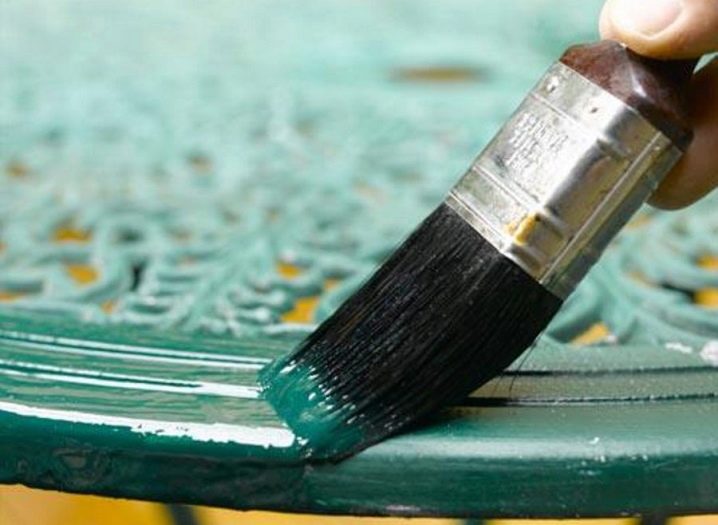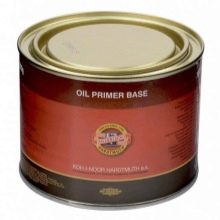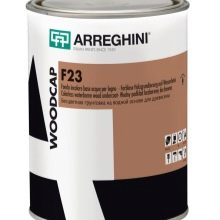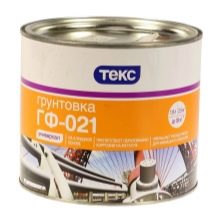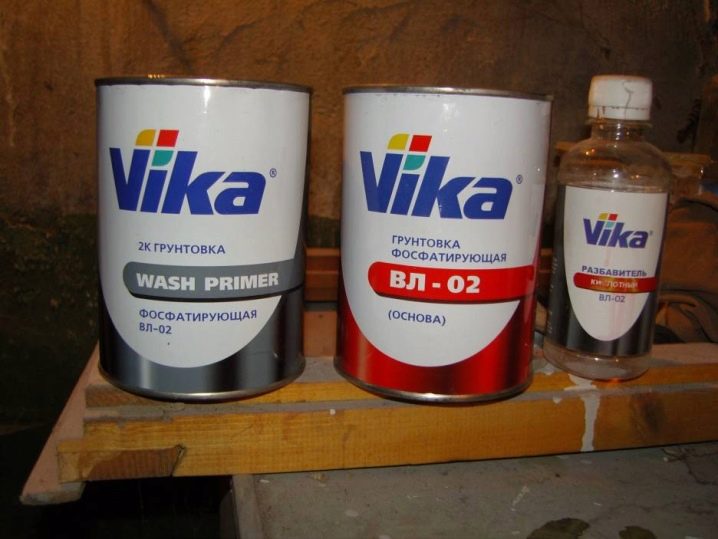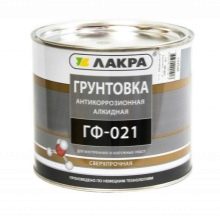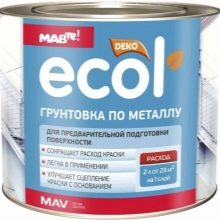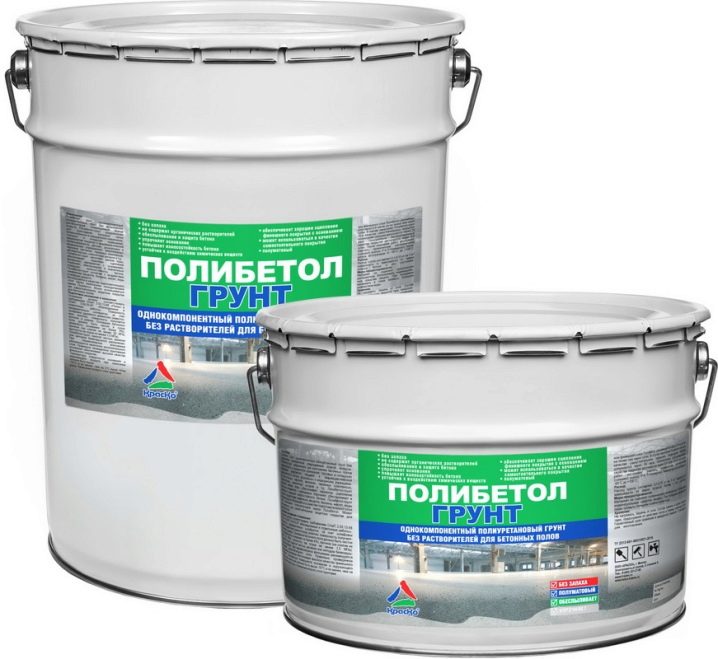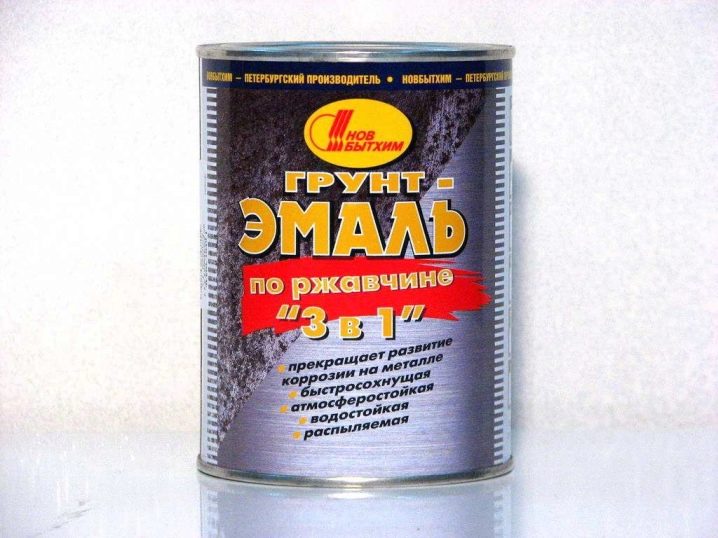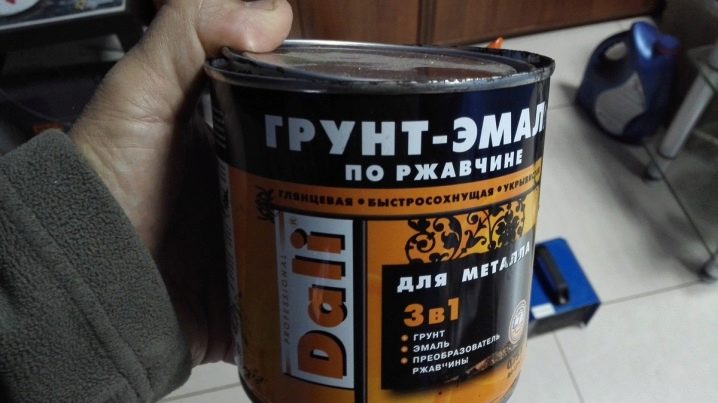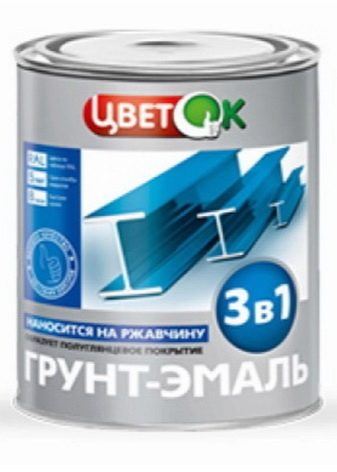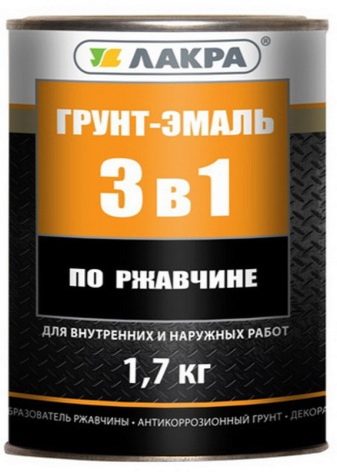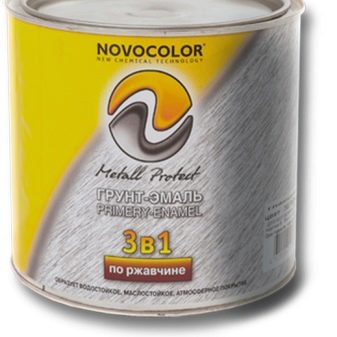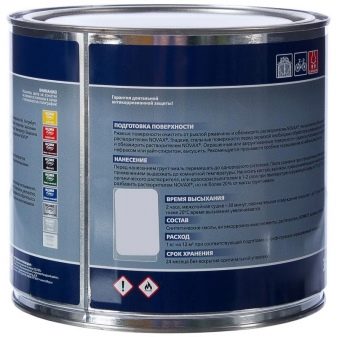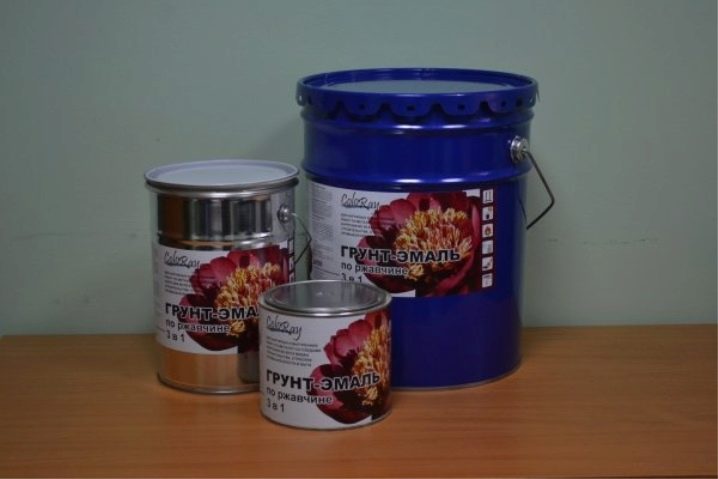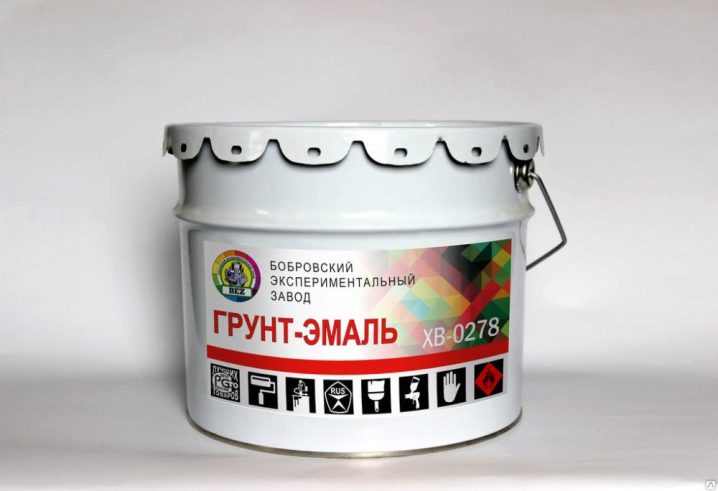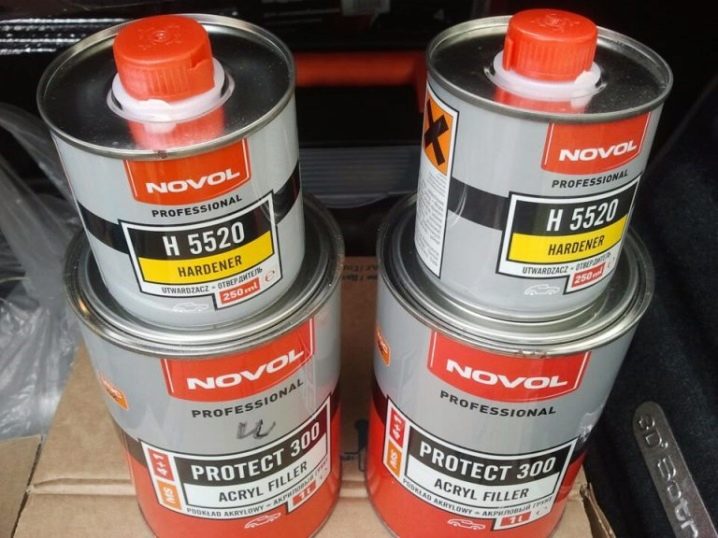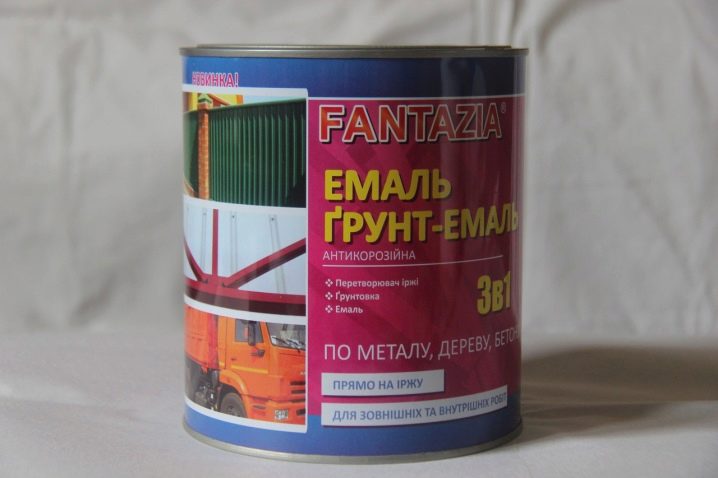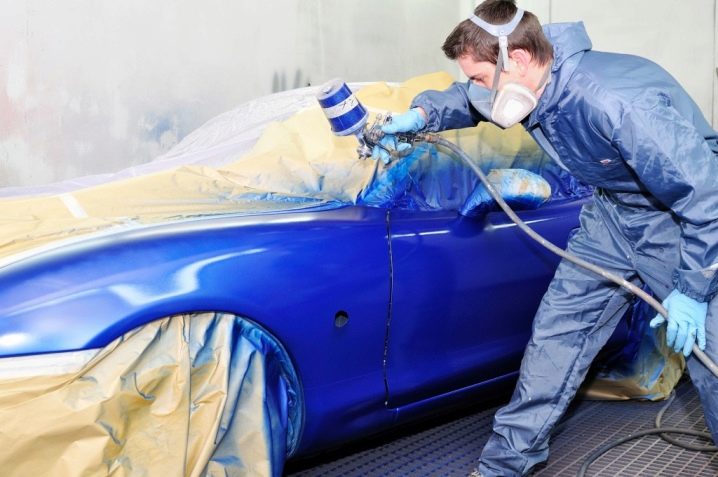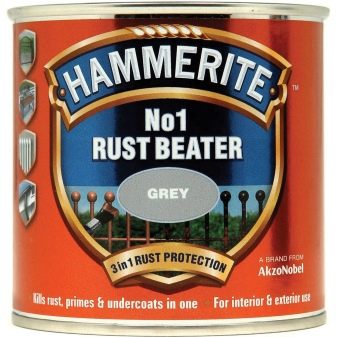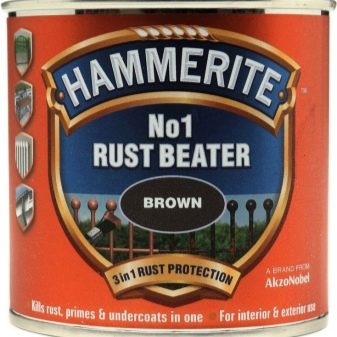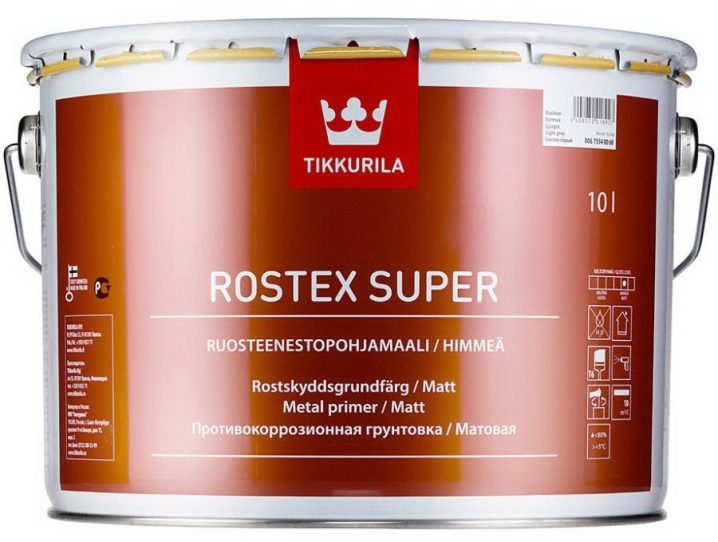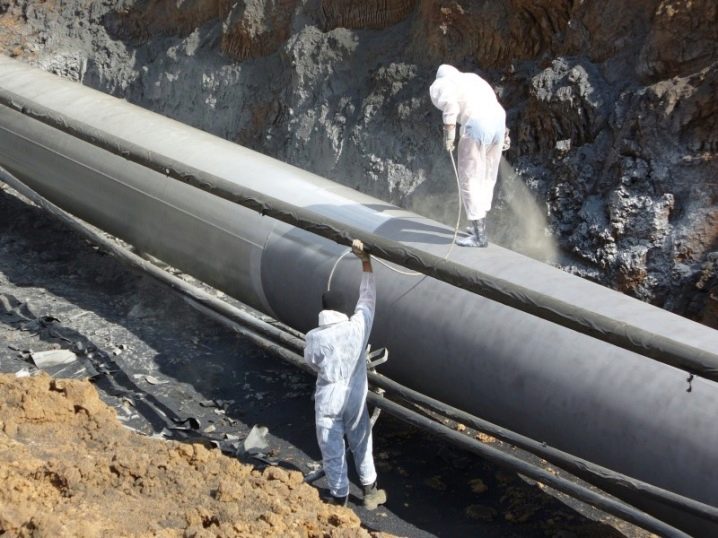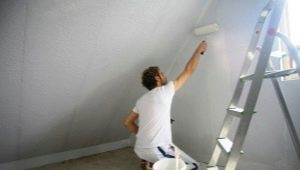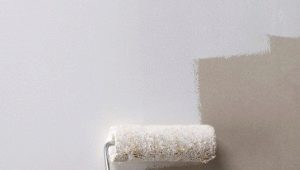Primers for metal: features of choice
Painting metal surfaces is a task that ensures the aesthetic appeal of the material. However, it is impossible to achieve a positive and long-lasting result by providing only the external component, since the metal itself is unstable to the effects of such phenomena as corrosion.
Special features
Everyone knows that metal surfaces with time and under the influence of various environmental factors rust and become useless, which is why it is recommended to use a special soil that creates a certain surface protection. Corrosion is considered to be the most frequent cause that adversely affects the operation of various metal mechanisms, due to which they fail.
In addition to the protective functions, the primer serves as a preparatory layer prior to the application of the coloring composition.Its use favors more productive adhesion of the surface and paintwork.
Ensuring the implementation of a full range of protective and preventive measures, part of which is the treatment of metal surfaces with soil and dye composition, it is possible to minimize damage to the metal. In addition, there are varieties of the composition, acting as rust converters due to the chemical characteristics of the substance. Such properties are relevant in the work with metal structures that have already undergone corrosion. Treatment with the composition will significantly extend their operational life.
The composition of the product includes specific substances. - inhibitors, it is their presence in the tool that provides him with the presence of protective characteristics. The presence of good adhesion between the surface for painting and paintwork is very important for metals such as aluminum and zinc.
Types and characteristics
Allocate the whole classification of primers for metal. Each composition after drying forms a colorless layer that prevents the penetration of moisture. The main task is to acquire the appropriate composition.In this case, the choice of finishing material directly depends on the specifics of the basis with which he is to work, as well as the conditions of application. There are non-ferrous and ferrous metals. Based on this criterion, you need to select products.
Taking into account the composition, the soil is divided into the following types:
- oil;
- water based;
- mixed.
Regarding the properties of products, you can make the following classification of primers:
- Phosphating agents, incorporating two components - a diluent and phosphoric acid. They are a universal primer used for almost all metals. Acidic products have good adhesion.
- Insulating combines two types of soil: alkyd and epoxy. Products have excellent moisture resistance properties, including protection against oxygen. Zinc white and iron red lead are present as a filler. The primer manifests itself most effectively in work with ferrous metals.
- Passivating agents with anti-corrosion properties, reduce the electrochemical properties of the metal.
- Inhibitory products due to which enamel-primer is formed on the surface. In the role of inhibitors are oil-soluble or water-soluble substances.
- Protective compositions, due to which a film is formed on the surface, providing protection even from mechanical damage. This feature is achieved due to the presence of zinc in the soil. This product is considered an ideal option for metal surfaces located in the open air, where they are constantly affected by weather conditions and other aggressive phenomena.
- Primer on rust produced for the treatment of metals that have already been subjected to corrosion. The technology of applying the composition requires mandatory pre-treatment and grinding of the damaged area. Products convert rust and create a protective film.
- Transformative products are the easiest to operate. Before applying it, you can not remove the rust, and immediately treat the surface with the composition. Such technology is possible due to the presence of chemicals that destroy it themselves, penetrating into the damaged areas.Processing is not necessary for metals in satisfactory condition. If rust is peeling off, then a preliminary cleaning should be carried out.
Today on the shelves you can find a good option - enamel 3 in 1. Such compositions provide quick processing and will not need to pick up a secondary primer and paint composition. For high-quality surface treatment, it is enough to apply 3 layers of this composition, which will ensure the implementation of a number of mandatory functions. The disadvantages of a multifunctional tool are a small anti-corrosion life of such a coating due to the absence of a phased processing of the material.
For specific conditions with extreme temperatures, there is an acryl-rubber primer-enamel on metal. Such winter products can be applied to the surface even at high temperatures - up to -35 ° C. The products are made in accordance with GOST and perfectly perform their functions even with temperature changes from -60 to +100 degrees, due to which it is considered an excellent heat-resistant and heat-resistant primer.
Colors
Primers for metal are classified not only by the presence in the composition of certain components, but they also come in various colors.The most common options are gray compounds, as well as brown. In general, alkyd products have this color.
The gray color of the soil can be obtained by mixing white and black compositions, the main thing is to use the compositions of one manufacturer.
There are companies that produce special systems of colored soils. A prominent representative of this direction is the company Sikkens. Its product line “Colorbuild” incorporates a primer, represented by six primary colors - green, yellow, red, white, black, blue.
Which is better to choose?
When purchasing soil, first of all you need to decide on the criteria of this choice. It is very important to take into account the type of metal, the possible level of mechanical loads on it, as well as the climatic conditions in which the surface will be used - temperature, humidity level, ultraviolet penetration.
An important is the type of tool that will be performed. For processing can be used brush, roller, spray or selected products can be produced in aerosol cans.Taking into account the convenience and speed of execution of surface treatment with a spray, it is worth considering that the consumption of the composition with this method will increase significantly.
There may be situations when it will be necessary to apply a moisture-proof coating. In particular, this applies to subsequent work with frost-resistant mixtures, which are used for processing facades and fences on the street. Regardless of the type of composition, metal structures should be primed in strict compliance with the temperature regime - from minus ten to plus twenty-seven degrees.
As additional personal protective equipment, you must buy gloves, goggles and a respirator. This is especially true of work performed by the sprayer.
When buying soil, it is important to consider the following nuances:
- the qualitative composition of the metal, including the characteristics of the alloy;
- conditions of operation of the structure or product;
- the specificity of the composition - the method of film formation and compatibility with paintwork materials, if the surface is treated for painting;
- corrosion level;
- the time of complete drying of the soil - there is a quick-drying primer, alkyd for exterior works and acrylic compositions for internal treatment;
- consumption rates of funds;
- product toxicity. Because facade products are more toxic, they can have an unpleasant odor.
Any mixture on the package has an instruction; it must be read in order to avoid situations when mistakes will be made during the operation of this or that product.
Application area
The compositions differ in purpose and operating conditions. Automotive primers have a number of specific characteristics, so they are considered products of a narrow purpose. There are universal compounds that are applicable both for ordinary metal surfaces, and for works on already rusty metal. Universal compounds are used for cast and forged structures, which have a small roughness. This feature increases adhesion. Some problems arise in working with the soil on a galvanized base, copper and aluminum surfaces. The zinc structure can chemically react with the composition, which will reduce adhesion.
Manufacturers
It is important when buying a primer to have an idea not only about the cost of production, but also about the manufacturers of compounds.
Russian soil "Farbox GF-21" - the most popular and popular mixture. The composition is recommended for the processing of ferrous metals, the products have a low cost, but it is characterized by excellent resistance to the effects of detergent compositions and natural oils.
English manufacturer Hemmerite manufactures products "Rust-Beater №1" - a primer containing particles of heat-treated glass, which perfectly penetrate the structure of rust and prevent the ingress of moisture. Hemmerite also offers the “Special Metal Primer” primer, used as a universal remedy for non-ferrous metals. The products work perfectly on chrome, copper and brass surfaces, forming a smooth coating that favorably affects the adhesion to paintwork materials.
Tikkurila Offers buyers anti-corrosion compound "Rostex Super", which belongs to the class of quick-drying soils for steel, aluminum and galvanized surfaces. The composition does not contain lead, has heat resistance and good wear resistance.
Tips and recommendations for use
Any construction work has its own specifics and fundamental principles of implementation.
To work with a primer for metal, you can select a number of general recommendations:
- with the spray gun it is best to use liquid formulations;
- water-dispersible mixtures dry very quickly, so the second layer is coated immediately;
- for smaller designs or products, choose a spray. The aerosol is very convenient in operation, but on condition that it is necessary to apply the composition to a small plane;
- surface treatment should be performed without interruption. Therefore, the calculation of the amount of the required composition should be performed on a mandatory basis
- two or three thin layers will lay down much better than thick;
- the ground surface makes it possible to get a better result from priming;
- Coloring agents are required to be applied immediately after the primer has dried. Due to the delay on the coating dust will appear, which will lead to a decrease in adhesion to the paint.
Proper adherence to all the preparatory stages prior to primer application, the selection of suitable products, carried out taking into account all the nuances concerning the specificity of the surface and the means for applying a corrosion-resistant coating, will provide an attractive appearance to the product or the whole structure. This will greatly extend the service life and will postpone the need for repair work for a sufficiently long period.
Properly primed and painted product, facade, design, detail or surface in the room will be reliably protected from the negative effects of the environment, mechanical contacts, as well as give a certain aesthetic pleasure from the contemplation of a fresh and neat surface.
How to apply a primer for metal, see the following video.
